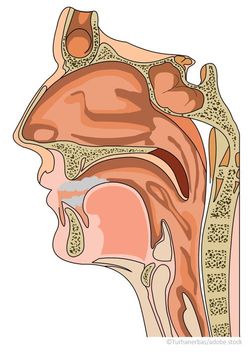© 2025 MJH Life Sciences™ , Patient Care Online – Primary Care News and Clinical Resources. All rights reserved.
DNA Methylation Links Allergic Disease with Season of Birth
Results of a new study help explain why your adult patients with atopy most likely have autumn birthdays.
[[{"type":"media","view_mode":"media_crop","fid":"47376","attributes":{"alt":"©racorn/Shutterstock.com","class":"media-image","id":"media_crop_1927818604668","media_crop_h":"0","media_crop_image_style":"-1","media_crop_instance":"5568","media_crop_rotate":"0","media_crop_scale_h":"0","media_crop_scale_w":"0","media_crop_w":"0","media_crop_x":"0","media_crop_y":"0","style":"height: 414px; width: 620px;","title":"©racorn/Shutterstock.com","typeof":"foaf:Image"}}]]
Specific markers on DNA may decode the link between a person’s season of birth and risk of allergy in later life, according to a new study.
Season of birth influences allergy risk. One of the underlying biological mechanisms may be the effect of the environment on DNA methylation, with potentially long-lasting effects on gene expression and disease, state the researchers, led by Dr. Gabrielle Lockett of the University of Southampton in Southampton, UK.
“It might sound like a horoscope by the seasons, but now we have scientific evidence for how that horoscope could work. Because season of birth influences so many things, the epigenetic marks discovered in this study could also potentially be the mechanism for other seasonally influenced diseases and traits too, not just allergy,” Lockett said.
The researchers measured whole blood epigenome-wide DNA methylation on samples taken from 367 people born on the Isle of Wight. They found that particular epigenetic marks, specifically DNA methylation, were associated with season of birth and still present 18 years later.
They were also able to link these birth season epigenetic marks to allergic disease. For example, people born in autumn had an increased risk of eczema compared to those born in spring. The results were validated in a cohort of Dutch children.
“Season-associated methylation was enriched among networks relating to development, the cell cycle and apoptosis,” they stated.
Season-associated methylation was largely absent in newborns, suggesting it arises postnatally.
The researchers concluded that “this study demonstrates that DNA methylation in adulthood is associated with season of birth, supporting the hypothesis that DNA methylation could mechanistically underlie the effect of season of birth on allergy, although other mechanisms are also likely to be involved.”
Study co-author John Holloway, Professor of Allergy and Respiratory Genetics at the University of Southampton, added: “These are really interesting results. We know that season of birth has an effect on people throughout their lives. For example, generally people born in autumn and winter are at increased risk for allergic diseases such as asthma. However, until now, we did not know how the effects can be so long lasting.
“Epigenetic marks are attached onto DNA, and can influence gene expression, the process by which specific genes are activated to produce a required protein, for years, maybe even into the next generation. Our study has linked specific epigenetic marks with season of birth and risk of allergy. However, while these results have clinical implications in mediating against allergy risk, we are not advising altering pregnancy timing.”
The researchers noted that further research is needed to understand by what mechanism the different seasons of the year lead to altered disease risk, and whether specific differences in the seasons, including temperature, sunlight levels, and diets, play a role.
More study is also needed on the relationship between DNA methylation and allergic disease, and whether other environmental exposures also alter the epigenome, with potential disease implications.
The researchers published their results online March 29, 2016 in the journal Allergy.
Citation: Lockett GA, Soto-Ramirez N, Ray MA, et al. Association of season of birth with DNA methylation and allergic disease. Allergy. Article first published online: 29 MAR 2016. DOI: 10.1111/all.12882
http://onlinelibrary.wiley.com/doi/10.1111/all.12882/abstract
©



